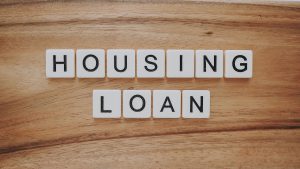 If you are planning to buy a home, one of the most important decisions you will have to make is choosing between a fixed-rate mortgage and an adjustable-rate mortgage. Both types of mortgages have their pros and cons, and the best option for you will depend on your personal and financial situation. In this blog, we will explain the differences between fixed-rate and adjustable-rate mortgages, and help you weigh the factors that can influence your choice.
If you are planning to buy a home, one of the most important decisions you will have to make is choosing between a fixed-rate mortgage and an adjustable-rate mortgage. Both types of mortgages have their pros and cons, and the best option for you will depend on your personal and financial situation. In this blog, we will explain the differences between fixed-rate and adjustable-rate mortgages, and help you weigh the factors that can influence your choice.
What is a Fixed-Rate Mortgage?
A fixed-rate mortgage is a home loan that has an interest rate that remains the same throughout the loan’s term. This means that your monthly payment will also stay the same, regardless of how the market interest rates change. A fixed-rate mortgage can offer you stability, predictability, and peace of mind, as you will always know how much you have to pay each month.
The most common terms for fixed-rate mortgages are 15 years and 30 years. A 15-year mortgage will have a lower interest rate and allow you to pay off your loan faster, but it will also have a higher monthly payment. A 30-year mortgage will have a higher interest rate and cost more in interest over time, but it will also have a lower monthly payment.
What is an Adjustable-Rate Mortgage?
An adjustable-rate mortgage (ARM) is a home loan that has an interest rate that can change over time, based on a specific index and margin. This means that your monthly payment can also vary, depending on how the interest rate adjusts.
An ARM typically has an initial period where the interest rate is fixed, followed by a period where the interest rate can adjust periodically. For example, a 5/1 ARM has a fixed interest rate for the first five years, and then can adjust once every year thereafter. The initial interest rate on an ARM is usually lower than the interest rate on a comparable fixed-rate mortgage, which can make it more affordable in the short term.
However, after the initial period ends, the interest rate on an ARM can increase or decrease, depending on the market conditions. This can make your monthly payment unpredictable and potentially higher than what you would pay with a fixed-rate mortgage. To protect borrowers from extreme fluctuations, ARMs usually have caps that limit how much the interest rate can change at each adjustment and over the life of the loan.
How to Choose Between Fixed-Rate and Adjustable-Rate Mortgages
There is no definitive answer to whether a fixed-rate or an adjustable-rate mortgage is better for you. It depends on several factors, such as:
- Your budget and income
- Your credit score and debt-to-income ratio
- Your homeownership goals and plans
- Your risk tolerance and preference
- The current and expected market conditions
Here are some questions that can help you decide which option is right for you:
- How long do you plan to stay in the home? If you plan to stay in the home for a long time (more than 10 years), a fixed-rate mortgage may be a better option, as it can protect you from rising interest rates and offer you long-term stability. If you plan to sell or refinance the home within a few years (less than 10 years), an adjustable-rate mortgage may be a better option, as it can save you money with a lower initial interest rate and allow you to take advantage of falling interest rates.
- How much can you afford to pay each month? If you have a tight budget and prefer to have consistent and predictable payments, a fixed-rate mortgage may be a better option, as it can help you avoid payment shocks and budget more easily. If you have more flexibility in your budget and are comfortable with some uncertainty in your payments, an adjustable-rate mortgage may be a better option, as it can offer you lower payments in the beginning and potentially lower payments in the future if interest rates drop.
- How do you feel about taking risks? If you are risk-averse and value security over savings, a fixed-rate mortgage may be a better option, as it can eliminate the risk of interest rate changes and give you peace of mind. If you are risk-tolerant and willing to gamble on future savings, an adjustable-rate mortgage may be a better option, as it can give you the opportunity to benefit from favorable market movements and pay less in interest over time.
- What are the current and expected market conditions? If interest rates are low and expected to rise in the future, a fixed-rate mortgage may be a better option, as it can lock in the low rate for the entire loan term and save you money in the long run. If interest rates are high and expected to fall in the future, an adjustable-rate mortgage may be a better option, as it can start with a lower rate than a fixed-rate mortgage and adjust downward as interest rates decline.
Conclusion
Fixed-rate and adjustable-rate mortgages are two different types of home loans that have different interest rate structures and implications. A fixed-rate mortgage offers you stability and predictability, while an adjustable-rate mortgage offers you flexibility and potential savings. The best option for you will depend on your personal and financial situation and goals. You should compare the pros and cons of both options and consult with a mortgage professional who can help you find the best mortgage for your needs.